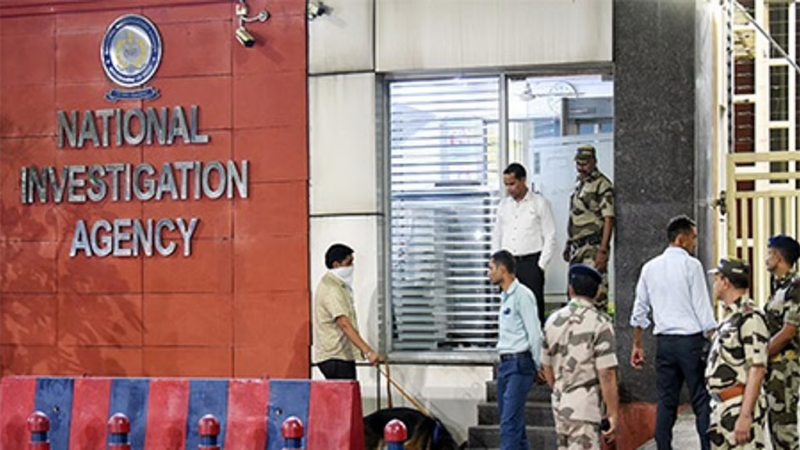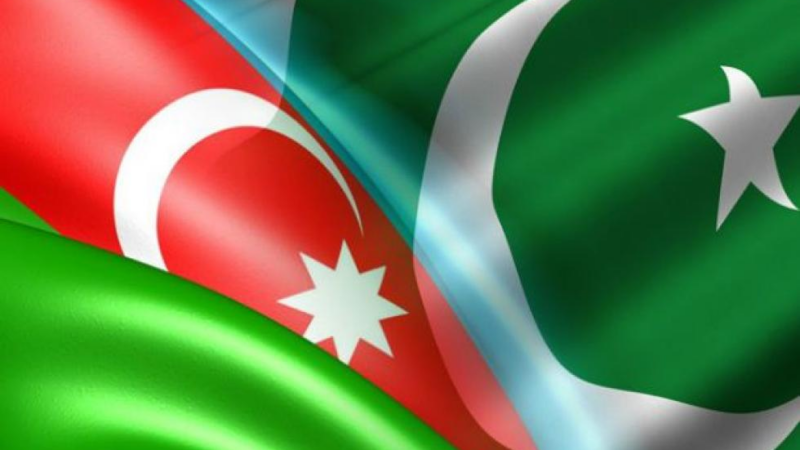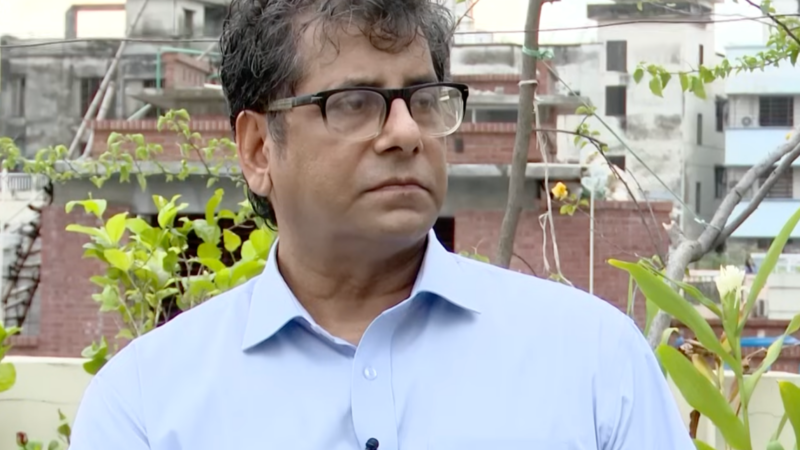Syria prison attack shows ISIL ‘absolutely’ growing stronger

The armed group continues to gain strength in the war-torn country after its defeat in 2019, analysts say.
A brazen ISIL attack on a prison in northeast Syria and the ensuing five days of fighting with the Kurdish-led Syrian Democratic Forces (SDF) is a stark reminder of the armed group’s growing strength, analysts say.
The complex operation saw two car bombs detonate outside a prison holding more than 3,000 ISIL (ISIS) detainees in conjunction with 200 assailants cutting off neighbourhood routes in Hasakeh city and attacking a nearby military base.
More than 100 people have been killed and tens of thousands of civilians have reportedly fled the fighting. It was the largest attack by ISIL in Syria since the fall of its so-called caliphate in 2019.
Hundreds of the group’s detainees escaped al-Sina’a prison, the largest in the world for ISIL members, during the initial chaos – exacerbated by a riot inside the prison, which culminated in kitchen staff being taken hostage and the whole north wing of the prison falling under the control of ISIL.
As of Monday, 27 Kurdish forces and seven civilians had been killed, according to SDF sources, as the prison remained under siege and clashes continued in surrounding neighbourhoods with US-led coalition helicopters flying overhead.
Counter Extremism Project analyst Gregory Waters told Al Jazeera ISIL in Syria is “absolutely” growing stronger.
“The fact that we’re at a point where ISIS can do this, has shown just how … much they’ve grown back from where they were in 2019,” Waters said.
For Waters and other researchers, this attack and sustained strength shown by the armed group is far from surprising.
Middle East Institute Fellow Vera Mironova highlighted while the international community turned its back on Syria, ISIL did not go anywhere.
“There is nothing new in what has happened, we absolutely know how active they are … It’s just a logical next step, it’s not a breakthrough,” Mironova told Al Jazeera.
‘Very significant’ attack
Within the last six months, there has been a clear indication of ISIL’s intentions to expand, said Middle East Institute Syria’s counterterrorism and extremism programmes Director Charles Lister.
“They’re a long way away from being able to capture, secure and consolidate control over territory, but an attack [like what has] taken place in Hasakeh is very significant,” Lister told Al Jazeera.
The fracture of Syria during the more-than-10-year civil war – the creation of internal borders and areas controlled by competing factions – has made it easier for ISIL to either lay dormant or move as they please, particularly seeing as there are no coordinated anti-ISIL operations between the factions.
International Crisis Group Senior Syria Analyst Dareen Khalifa told Al Jazeera that ISIL has maintained weapons and supply caches, training camps, and safe houses for fighters and commanders to retreat to in central Syria, specifically al-Badya, in recent years.
“ISIS cells have been regularly harassing the regime and affiliated units both in a coordinated manner and operating independently from each other when necessary,” Khalifa said.
When the Syrian government launched operations against ISIL positions in central Syria, the cells then moved to the northeast of the country, bolstering the technical expertise of the existing cells there.
Martin Reardon, The Soufan Group’s senior vice president, described the “volatile and chaotic” conditions of Syria as ideal for an armed group such as ISIL to thrive.
“Militarily speaking, territory that one side doesn’t control or at least maintain robust surveillance of is open to exploitation by the other side,” Reardon told Al Jazeera.
Waters said the US government will not approve requests for further equipment and financial support for the SDF to secure the open plains between Hasakeh countryside, Deir Az Zor and northern Raqqa, forcing the militia to withdraw from its positions periodically.
“So, if you look at how 200 ISIL fighters got into Hasakeh city, it’s not that hard to move across this open area because there are no checkpoints, no outposts, and no continual ground observations,” Waters explained.
Prison breaks on the radar
ISIL has maintained regular low-level violence across the northeast of Syria, including roadside bombings, drive-by shootings, and targeted assassinations, in the years following the collapse of its territorial control.
In November last year, 14 attacks were claimed by ISIL and an almost identical plot to jailbreak al-Sina’a prison in Hasakeh province was foiled by the SDF.
Targeting prisons, with the aim of freeing their detained members, is a well-known part of ISIL’s strategy.
As Reardon reminded, the tactic’s use went as far back as the group’s origins in al-Qaeda in Iraq.
Considering this thoroughly documented knowledge, particularly of the previous attempt on al-Sina’a, Lister speculated it would be virtually impossible to get 200 ISIL fighters into a tightly defended urban environment unless someone was paid off.
“The more we find out about the initial phase of this attack, the harder it is becoming to not believe that there is some extent of infiltration or bribery involved in setting up the ingredients for this attack,” Lister said.
“Parking two car bombs outside the biggest prison for ISIS militants … is an extraordinarily challenging thing to undertake without some sort of insider knowledge or someone closing their eyes to something.”
Mironova also said she “knows for a fact” prison guards give their phones to ISIL inmates, as she has witnessed women in the notorious al-Hol camp speaking with their detained husbands.
The dozen or so prisons in northeast Syria for ISIL detainees, captured during the fall of Baghouz, are makeshift at best and are not designed to be a long-term solution for hardened ISIL fighters.
Many are converted schools or hospitals, where prisoners are kept in large cells in significant numbers, making it easy for them to stage riots and make breakout attempts.
The Kurdish-led administration in northeast Syria has long expressed its frustration at being left with a “ticking time bomb” in unsecured infrastructure.
The US provided a significant amount of funding to train security units in the prison and equip guards with riot gear, according to Lister.
Last year, the British government provided $20m to reinforce walls and other physical security of the ISIL prisons in the northeast, including al-Sina’a, although these measures seem to have not been sufficient.
Loss of intelligence in Arab areas
Strained relations between the SDF and Kurdish administration and local residents in Arab areas such as Deir Az Zor have also been exploited ISIL in the northeast.
Khalifa listed frustrations about deteriorating living conditions, lack of services, and corruption as fuelling local resentment of the SDF.
“Collateral damages and behaviour of some SDF personnel during [counter-ISIL] raids – including instances of vandalism of private property, physical abuse and arbitrary arrests – have exacerbated local frustrations,” Khalifa said.
As the economy in Syria has deteriorated, ISIL used financial incentives in places such as Deir Az Zor to turn less ideologically inclined people towards their cause.
Waters suggested rebuilding the agriculture industry and addressing services provisions to increase economic stability and the security legitimacy of the Kurdish administration.
In the last few years, ISIL has also decimated the SDF’s intelligence networks in Arab areas by threatening and killing those who collaborated with the militia and making others too afraid to pass on information.
While the SDF will most likely regain control of al-Sina’a prison after they enter the besieged section and calm will eventually be restored to the surrounding neighbourhoods, there is no doubting the propaganda win ISIL made from this attack.
Lister described the photos and videos of escapees showing the deaths of security forces as “propaganda gold dust” for ISIL.
“They’re starting from a small place right now, but just gaining a few more recruits to their existing numbers is going to make a demonstrable difference to their capabilities on the ground,” Lister said.






